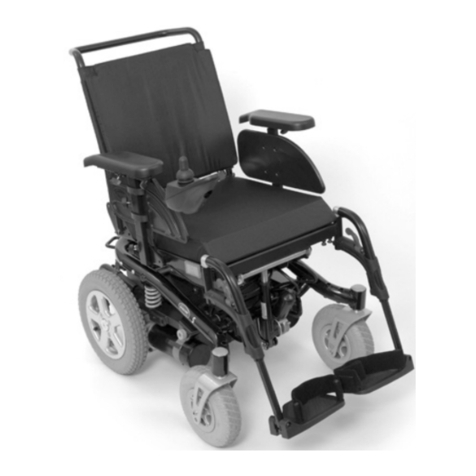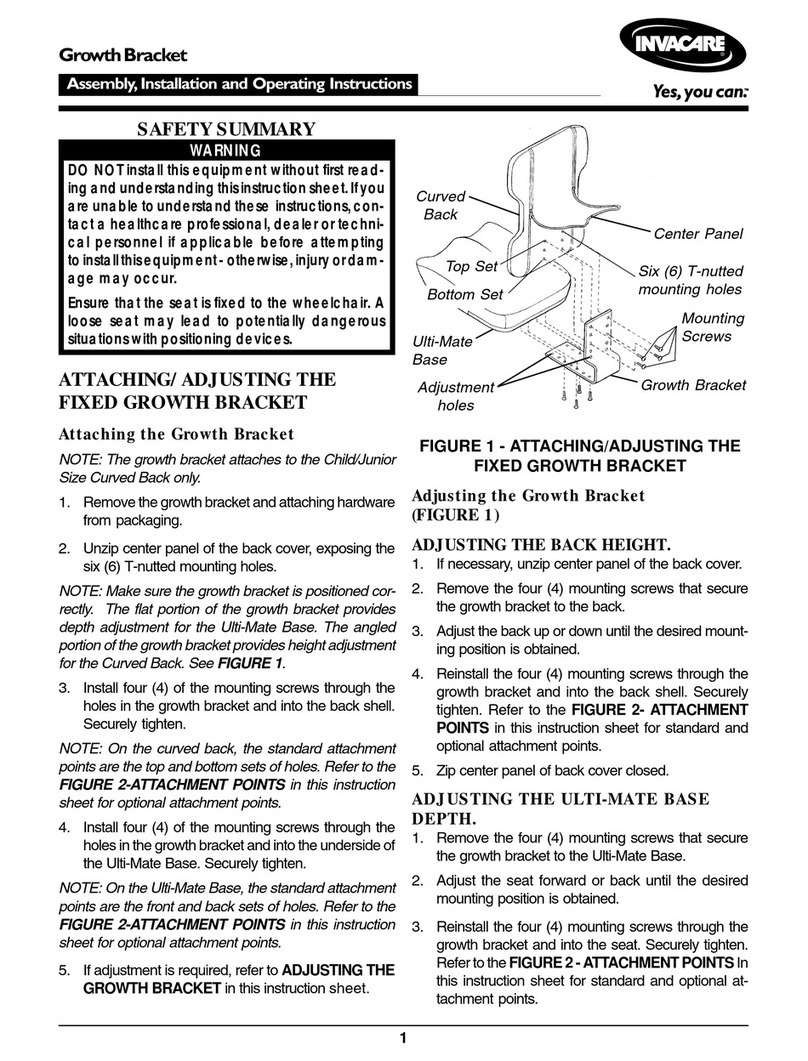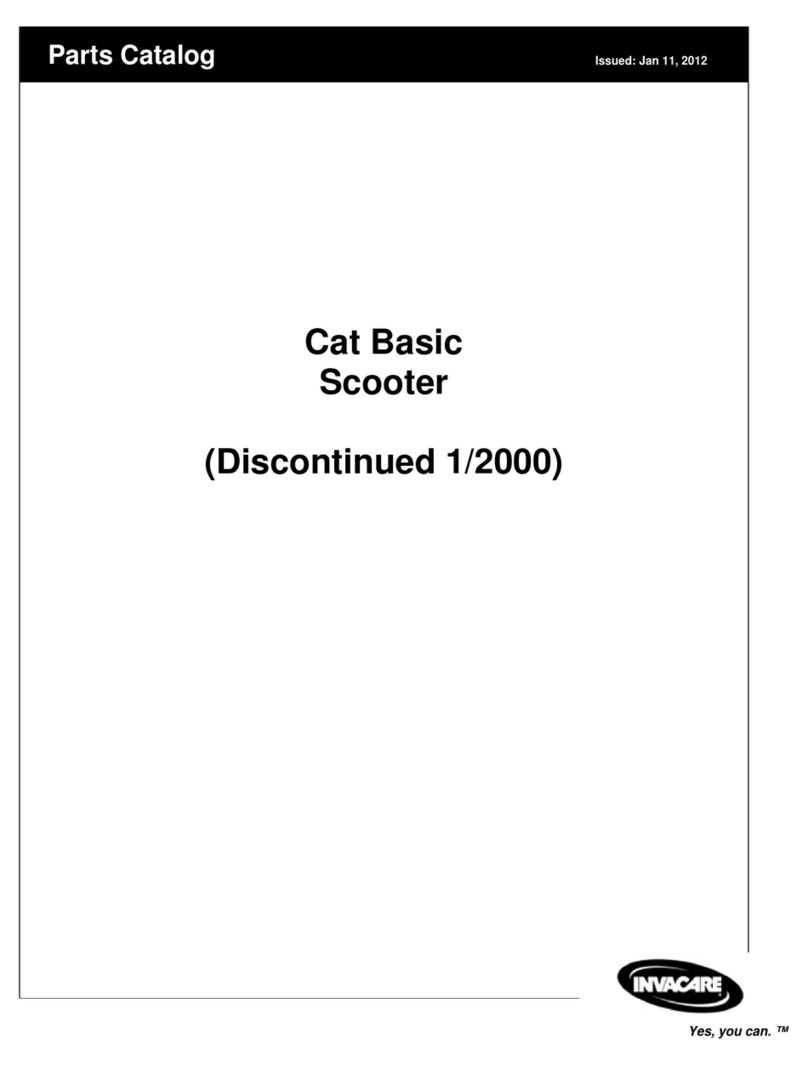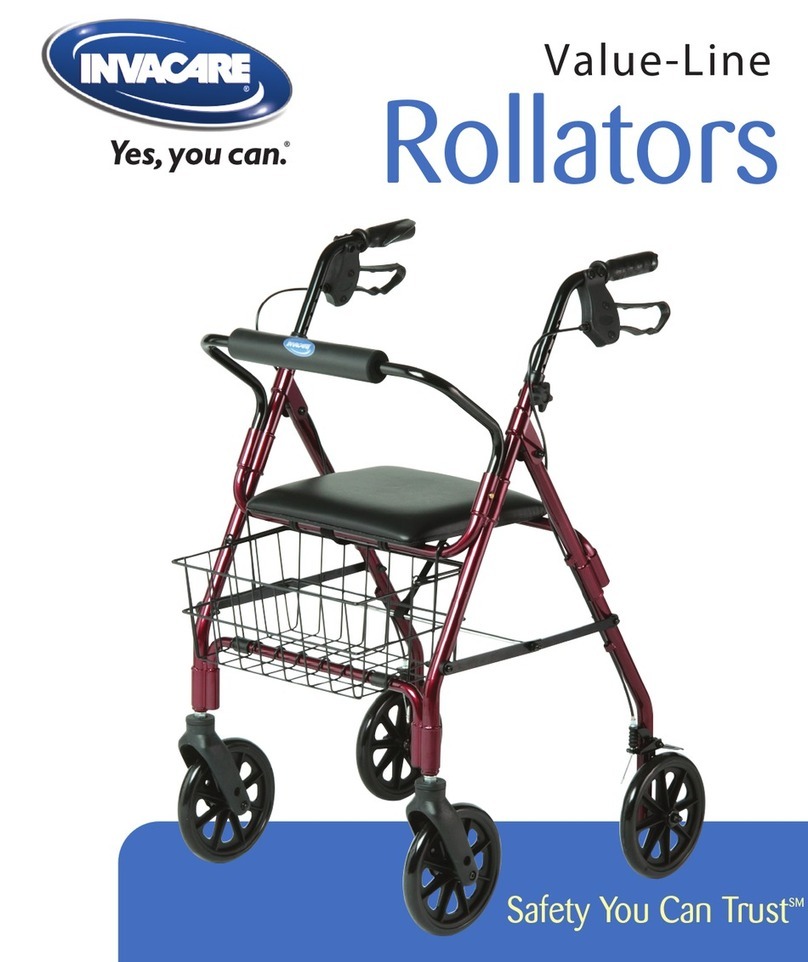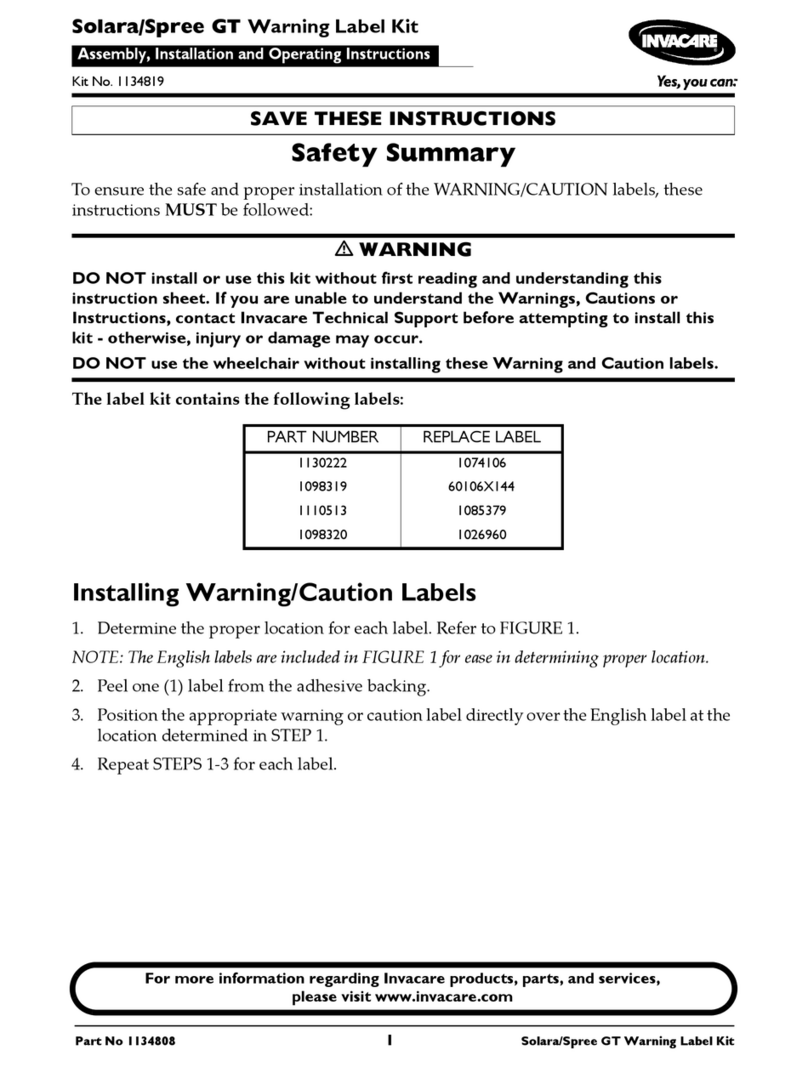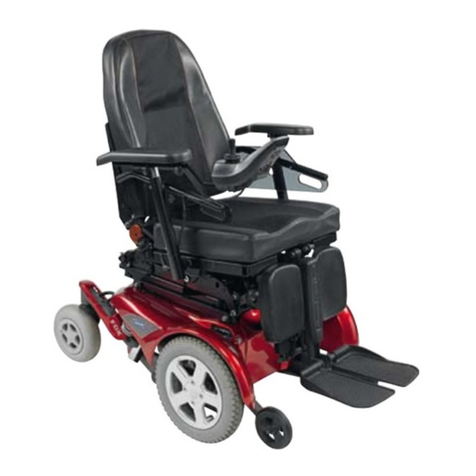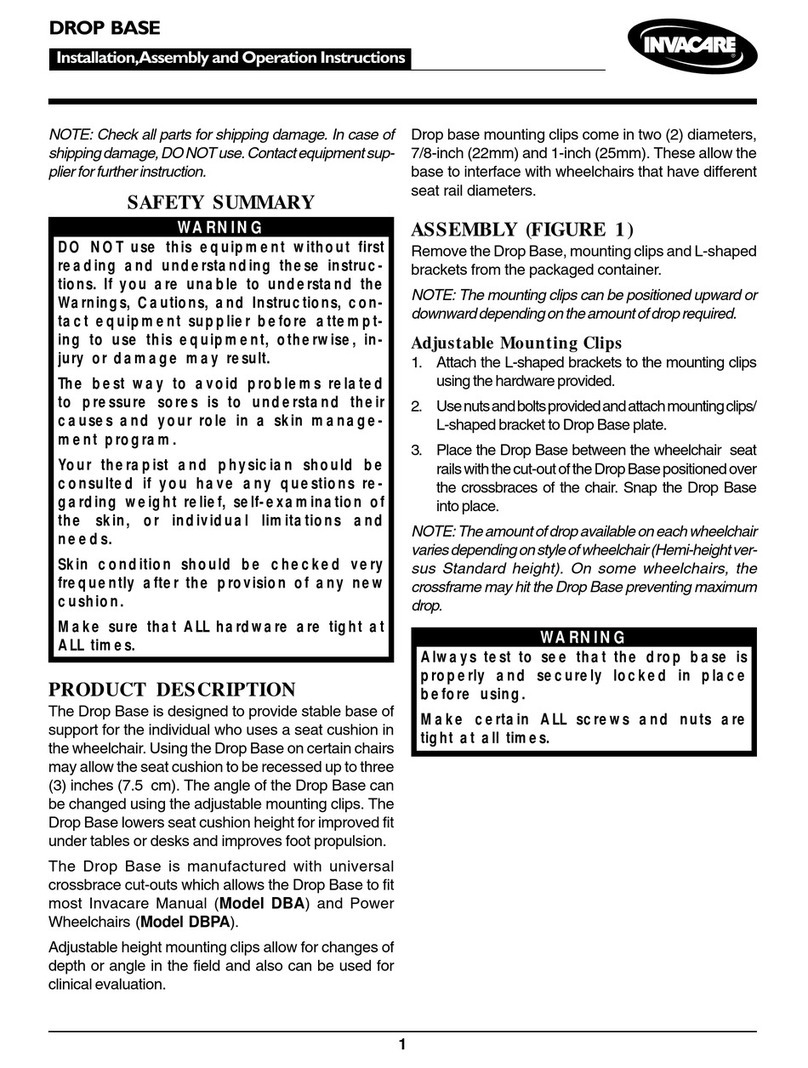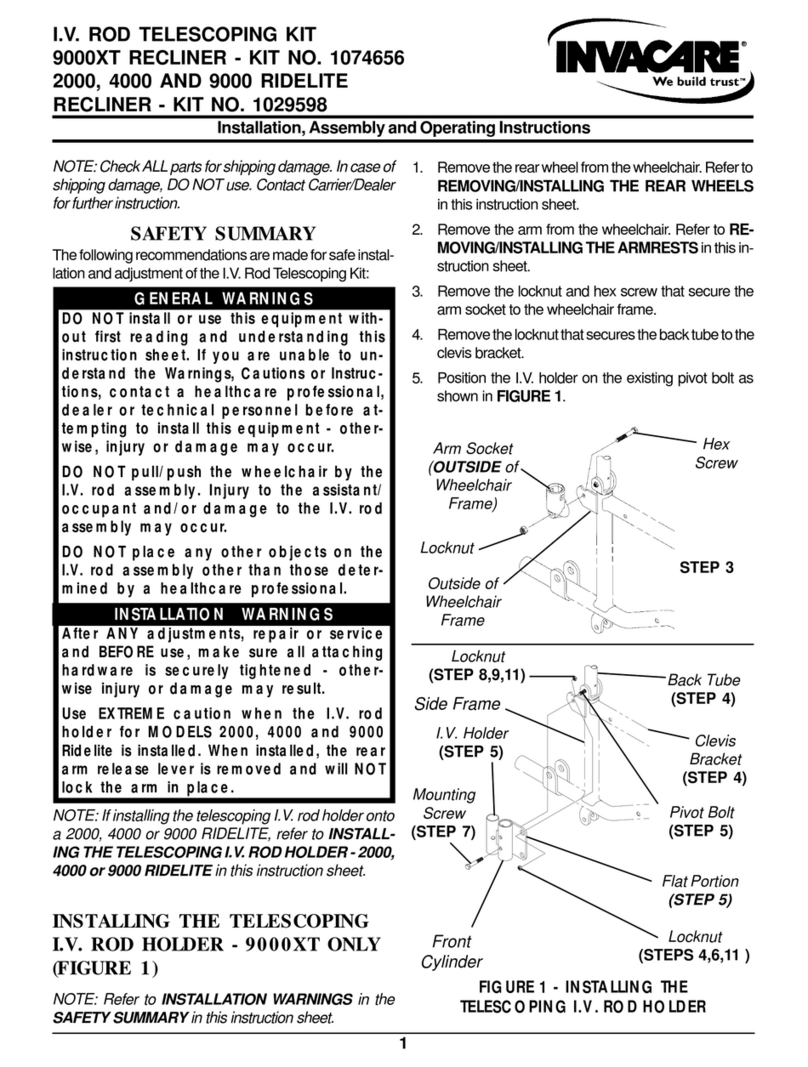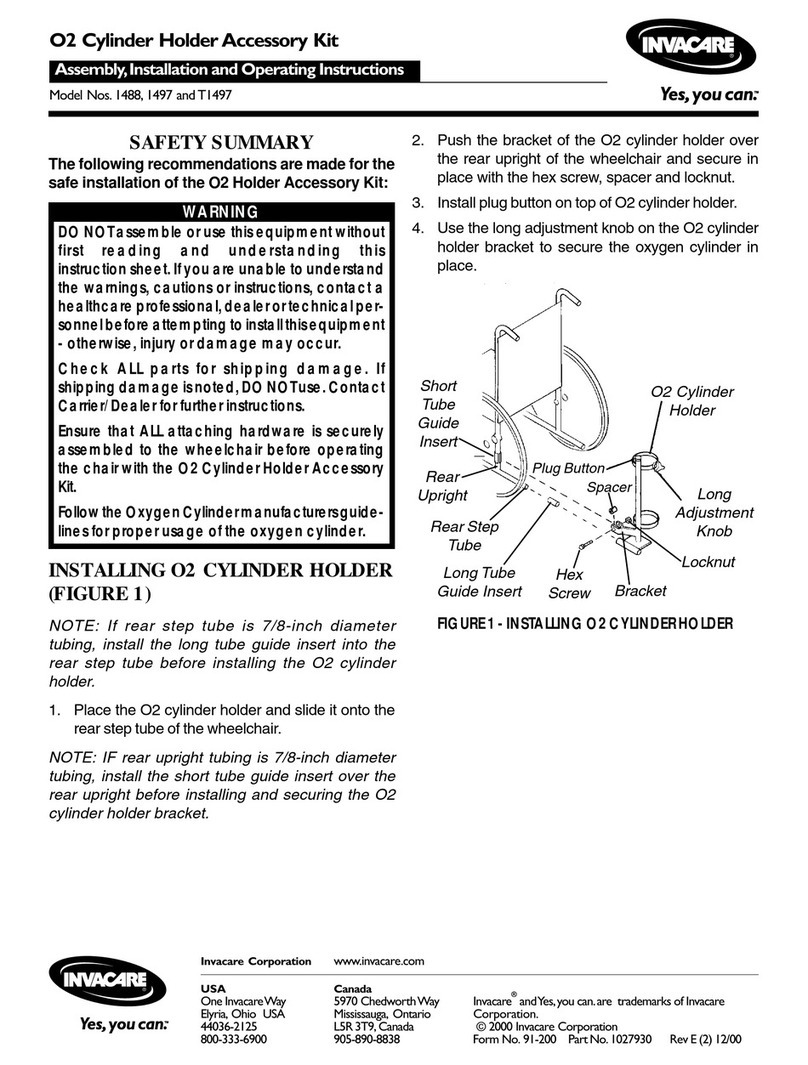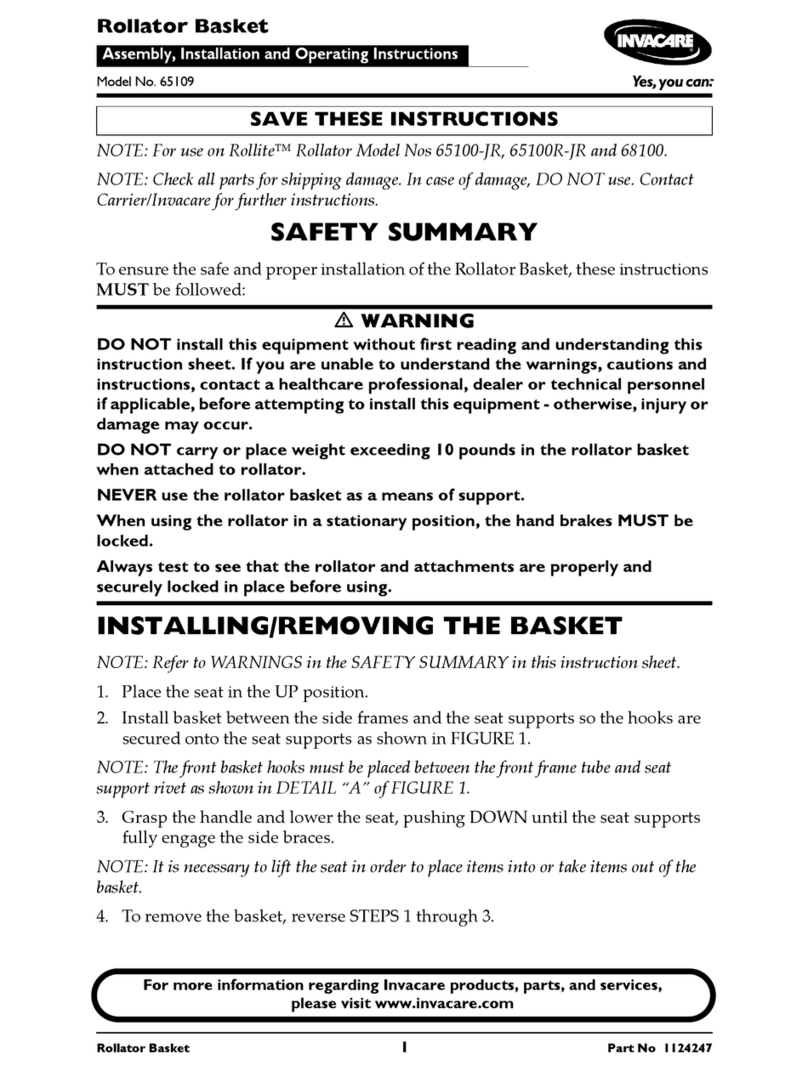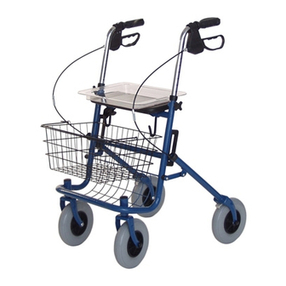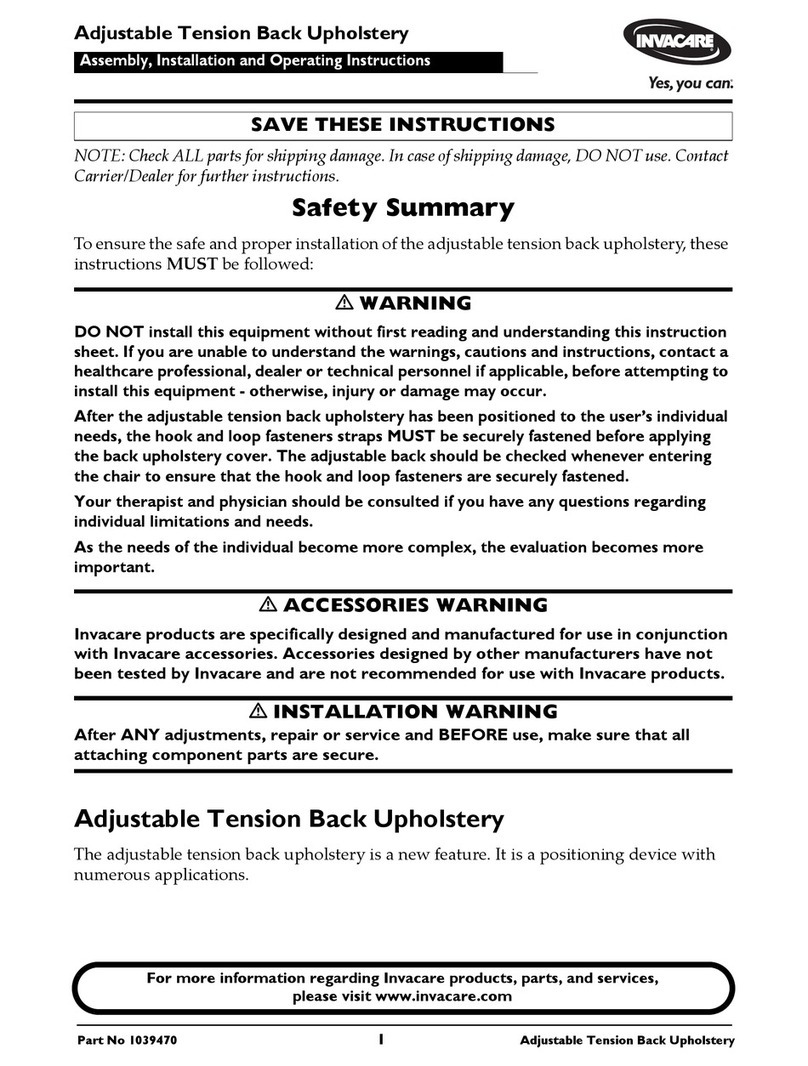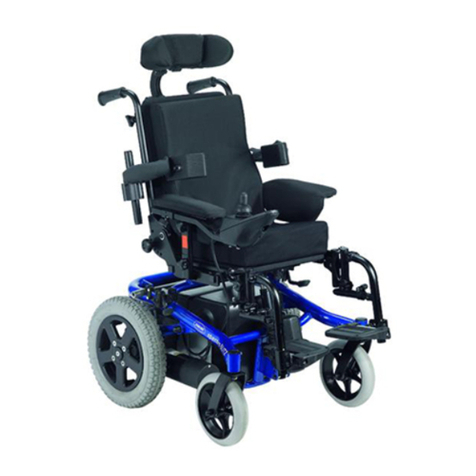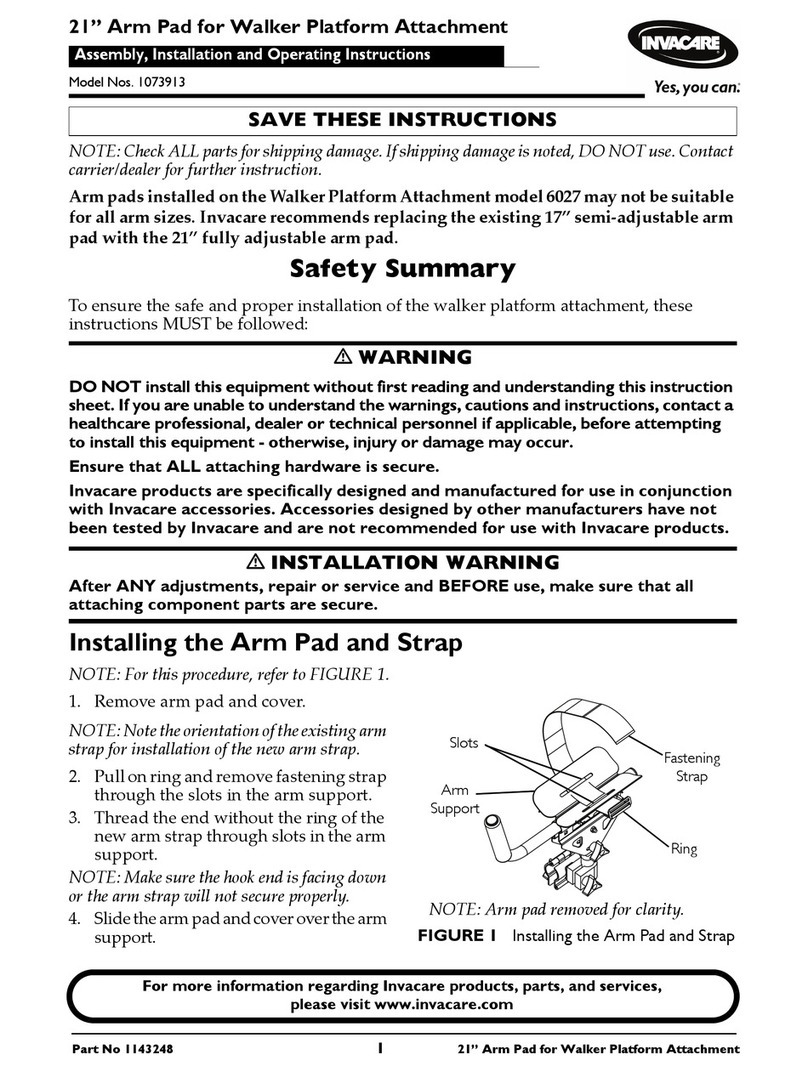
Invacare®Robin®
4Maintenance
4.1ChargingtheBattery
Ifthechargestatusbecomeslow,anaudibleindicator
soundsandtheindicatorlamponthebottomoftheceiling
hoistashes(seealso7.2Indicatorlightandaudiosignal,
page22).Whenthishappens,thereisusuallysufcient
powertolowerthepatient.
Itisnotpossibletousethehoistwhilethebattery
ischarging.
1.Finishthecurrentliftinprogress
Ifthecurrentliftinprocessdischargesthebattery
completely,anexternalbackupbatterymaybeused
totemporarilypowerthelift.SeeUsingtheexternal
back-upbattery.
2.Movetheceilinghoisttothechargingstation.
3.Assurethatthehandcontrolandchargingstationare
cleananddrybeforecharging
4.Placethehandcontrolintothechargingstation.
Ayellowindicatorlamponthechargerindicates
thehandcontrolisconnected.Theindicatorlamp
illuminatesredwhilecharging.
5.Whenfullycharged,theindicatorlamponthecharger
turnsgreen.
Aslongastheceilinghoistisnotinuse,leavethe
handcontrolinthechargingstation.
6.Tousetheceilinghoist,removethehandcontrolfrom
thecharger.
Keepingthebatterieschargedguaranteeshoist
functionalityandmaintainsthebatterytoensure
alonglifetime.
Iftheaudibleindicatorbeepsandtheblue
indicatoronthehoistashesafterthehoisthas
beenfullychargedandonlybeeninuseforashort
periodoftime,thebatterymayneedexerciseor
replacement.See4.2BatteryMaintenance,page
8.
Iftheceilinghoistwillnotbeusedformorethan
4weeks,Invacarerecommendsdisconnectingthe
chargerandpullingtheemergencystop.
Thechargerisconnectedtothemainswithamains
plug.Makesurethatthemainsplugisaccessible
andcanbeunpluggedifrequired.
4.2BatteryMaintenance
Iftheaudibleindicatorbeepsandtheblueindicatoron
thehoistashesafterthehoisthasbeenfullychargedand
onlybeeninuseforashortperiodoftime,thebattery
mayneedtobeexercised.
Toenablethebatterytochargefully,thebatteryshould
beexercisedfromtimetotime.
Followingalongperiodofstorage,itcouldalsobe
necessarytoexercisethebattery.
Itisalsosuggestedthatthebatteryisexercisedin
situationswherethehoistisusedinfrequently,and/or
wherethehandcontrolisplacedinthechargerforlong
periodsoftime.Inthissituation,therewillalwaysbe
capacityenoughforafewlifts,butwerecommendto
exercisethebatteryassoonaspossibleafterwards.
Exerciseofthebatterycanbedonebychargingand
dischargingthehoistcompletelyseveraltimes.
1.ChargethebatteryuntiltheLEDturnsgreen.
2.Removethehandcontrolfromthecharger.
3.Raiseandlowerthestrapswithaloadforoneminute.
4.Waittenminutes.
5.RepeatSteps3–4untilthebatteryiscompletely
discharged.
Continuethisprocessaftertheaudiblealert
soundsandthebluelightashes,indicating
thebatteryislow.
6.RepeatSteps1–5twotothreetimes.
4.2.1StorageCharacteristics
Essentiallyallrechargeablebatterycellsgraduallydischarge
overtimewhethertheyareusedornot.Thiscapacity
lossistypicallyduetoslowparasiticreactionsoccurring
withinthecell.Assuch,thelossrate(self-dischargerate)
isafunctionofthecellchemistryandthetemperature
environmentexperiencedbythecell.Duetothe
temperaturesensitivityoftheself-dischargereaction,
relativelysmalldifferencesinstoragetemperaturemay
resultinlargedischargeswhicharedifcultorimpossible
toreverse.Cellandbatterystorageissuesofconcernto
mostapplicationdesignersrelateeithertothespeedwith
whichthecellslosetheircapacityafterbeingchargedor
theabilityofthecellstochargeanddischarge“normally”
afterstorageforsomeperiodoftime.Inbothsituations,
generalguidelinesdevelopedfornickel-cadmiumcellswork
acceptablyfornickel-metalhydridecells.
4.2.2StorageTemperature
Asalreadymentioned,theself-dischargereactionrate
increaseswithhighertemperatures.Prolongedstorage
ofthebatterymaterialdeterioratingfaster;leakage
performancewillalsodeteriorate,resultinginareduced
batterylifetime.Itisrecommendedthat,forlongstorage,
batteriesshouldbekeptatroomtemperatureorbelow
(0-30°Cor32–86°F).
4.2.3StorageTime
Asthebatterylosesenergyduringstorage,thevoltage
alsodrops.Ingeneral,thebatterycapacitylossdue
toself-dischargeduringstoragecanberecoveredby
recharging.Ifthebatteryisstoredforoversixmonths,it
81586747-F
